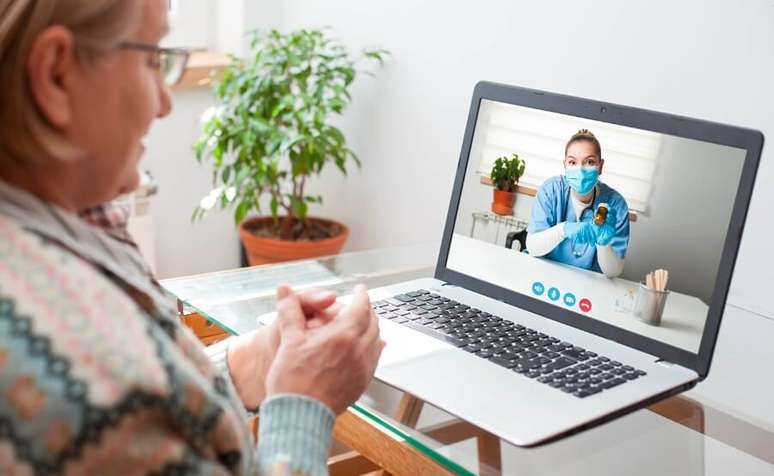It’s been almost four years since we were stuck at home watching life through the screen. I went to investigate the acceptance of the model
How is the adoption of telemedicine progressing in the post-pandemic period? This question has been on my mind lately. The fact is that, with the resumption of the pre-pandemic routine from Covid-19, I continue to think about how this type of technology aiming at greater convenience and safety for healthcare services has really become a habit, with greater acceptance from part of all those involved, such as doctors and other healthcare workers and patients. Does acceptance remain at a high level?
Well, apparently the answer is no. According to data from Health ICT 2022, which investigates exactly what the information and communication technology infrastructures are like in healthcare facilities in Brazil, only 33% of doctors and 26% of nurses visited patients via teleconsultation in the last year. If we think about the remote monitoring of people suffering from chronic diseases – a situation in which telemedicine can really change the course of care – this figure rises to 29% for nurses and 23% for doctors.
It still seems so small to me, given the potential that technology has to change access to healthcare and, ultimately, the industry’s business model.
Of course, a lot has already changed. Before the pandemic, for those who don’t remember, the debate over telemedicine involved regulatory issues that greatly delayed the use of the model. With the health emergency over, there were authorizations and many of us were able to experience the advantages of using telemedicine. For example, with the expansion of access to our health data in digital format: today we receive digital prescriptions and access test results without having to go to the laboratory. But it’s still not much.
Perhaps the cultural change we have experienced during the pandemic is not yet sufficient for adherence to be even greater. And this applies to both professionals and healthcare workers and/or public healthcare institutions.
Teleconsultation, for example, which is a technology that has been available for a long time [pelo menos duas décadas], still encounters some resistance in its use due to concerns about information security. And for this to change, there is no way, you need to invest in data security and people need to be trained on using the tool.
If this happens, the future possibilities are countless: from breaking down geographical barriers to exchanging information for the benefit of health: a rare case in Brazil can be discussed with a team abroad that has already treated this disease – and vice versa. Or a service can be performed virtually in a remote region, bringing the doctor where he needs to be.
Telemedicine is too rich a tool not to be well used, even from an economic point of view in the healthcare sector: its solutions for data storage, information management and data analysis are the essence of a medicine more effective and decisive prediction. .
So I return to the question you need to answer: how are you using telemedicine post-pandemic?
Rodrigo Guerra is a specialist in finance and innovation. To theUnbox project
of which he is the founder, curates fundamental content to drive urgent and necessary changes for people, businesses and society.
Source: Terra
Ben Stock is a lifestyle journalist and author at Gossipify. He writes about topics such as health, wellness, travel, food and home decor. He provides practical advice and inspiration to improve well-being, keeps readers up to date with latest lifestyle news and trends, known for his engaging writing style, in-depth analysis and unique perspectives.









